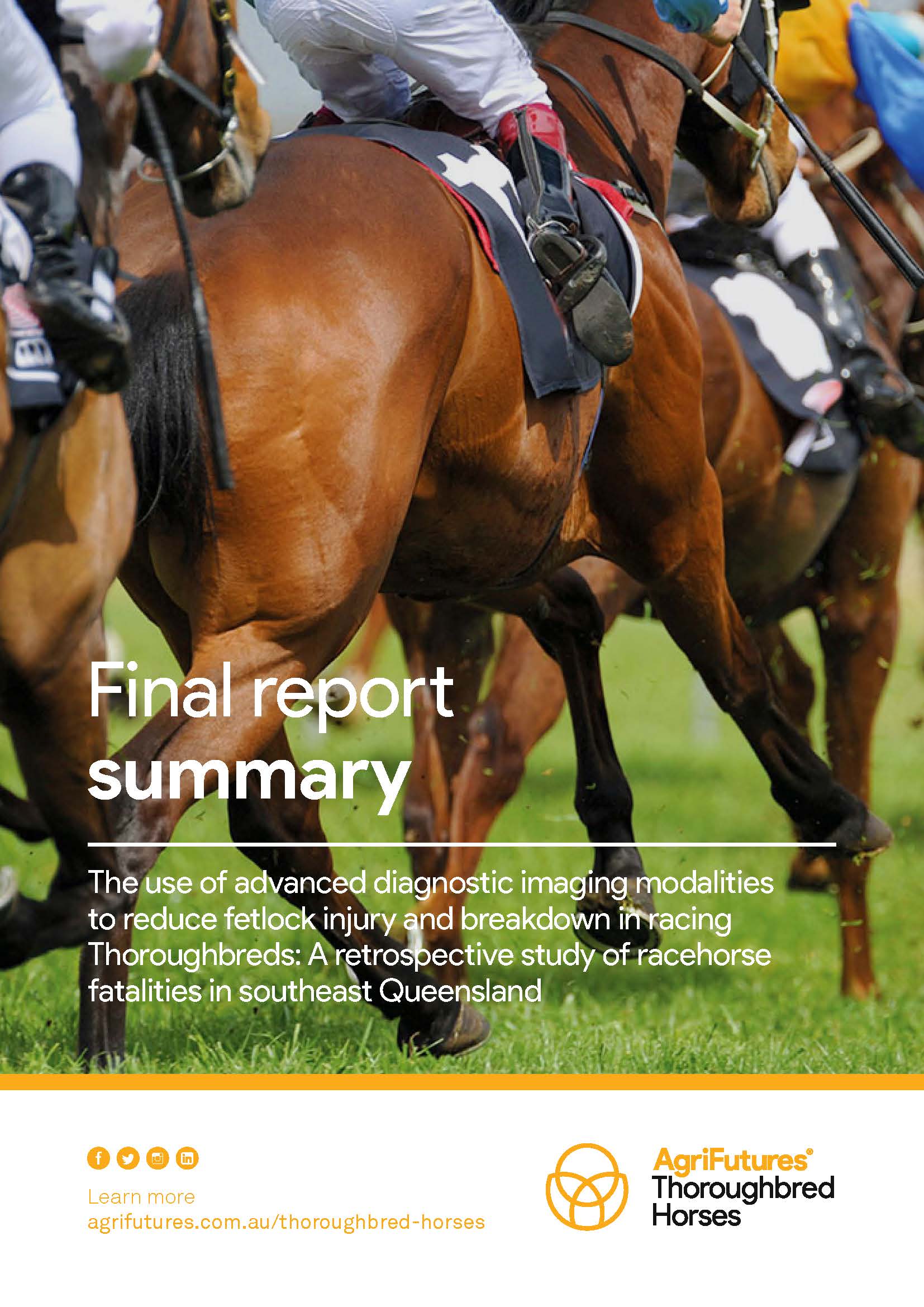Early detection of racehorses at risk of stress fracture is key to reducing the number of horses that suffer catastrophic fracture while racing. Bone changes are often present in the limbs of Thoroughbred racehorses in work, particularly in the fetlock region. However, it is currently unknown whether some of these changes indicate an increased risk of fracture or healthy changes in response to high-speed exercise.
This study assessed imaging and post-mortem appearances of fetlock changes and the comparative use of x-ray, computed tomography (CT) and magnetic resonance imaging (MRI) for detection. All fetlock joints were assessed from 20 horses that died during racing or training, including horses with and without fetlock fracture. Some findings were common and possibly represent normal bone change. Other findings were more prevalent in horses with fracture, possibly indicating increased fracture risk.
The results of this research will help to inform vets assessing fetlock images as to the clinical relevance of changes in this area, minimising the number of horses removed from training unnecessarily and increasing detection of horses at risk before catastrophic injury occurs.





